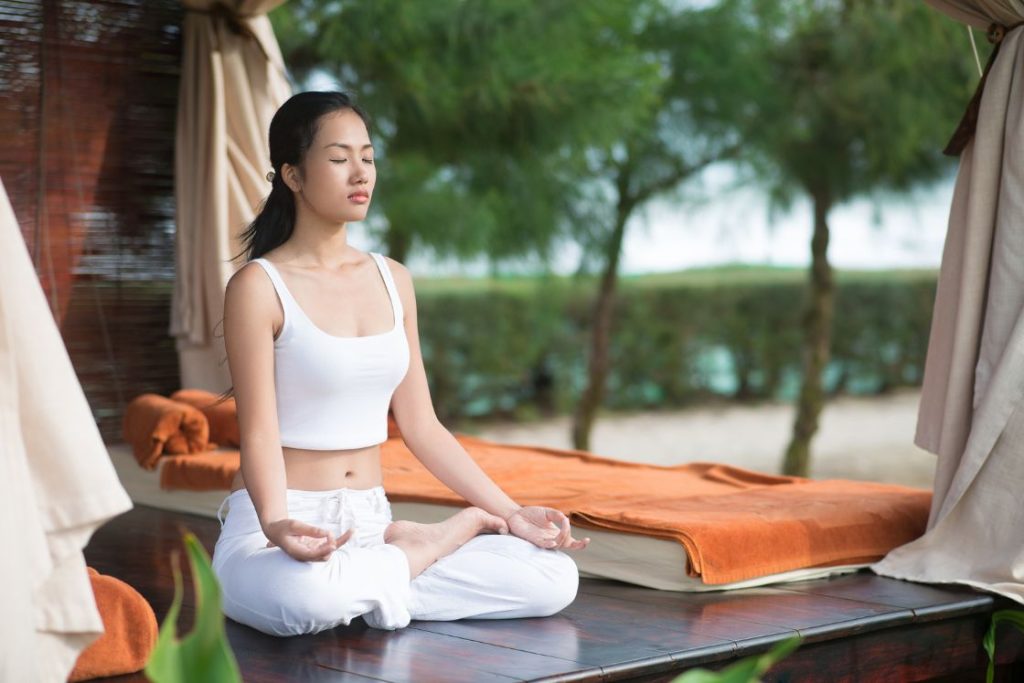
Pranayama comes from two Sanskrit words: prana, which means the vital life energy, and ayama, which means control, expansion, and depth. These breathing practices are one of the most effective ways to prepare your body and mind for a steady meditation practice.
Our life energy is closely linked to our thoughts and emotions. When prana moves unevenly, the mind becomes restless and our feelings shift from one state to another. You may have noticed how emotions change the breath. During sadness or stress, the exhalation becomes long and heavy. During anger, the breath turns short and tight. But when you enter a quiet sacred place, the breath becomes soft and peaceful without effort.
Through regular practice of pranayama, you learn to recognise these shifts and guide them with awareness. As the breath becomes clearer and calmer, the mind also opens to a more peaceful state. This awareness helps you discover the inner space within you that holds ease, joy, and stability.
Pranayama prepares you for meditation by creating stillness inside. Meditation is the simple art of resting in pure awareness, yet many people find it difficult because the mind is always trying to do something. A mind filled with noise and confusion cannot enter meditation. When pranayama clears the blocks of craving, doubt, and mental fog, concentration becomes natural. And when concentration deepens, meditation becomes effortless.
By allowing prana to move freely in the body and mind, these practices make meditation steady, deep, and more fulfilling.
Scientific evidence of pranayama for calming the mind
Pranayama has consistently shown strong benefits for calming the mind and easing stress. It supports better sleep, improves awareness, and activates the parasympathetic nervous system, which brings the body into a state of rest and balance. With regular practice, the mind becomes more peaceful, steady, and relaxed.
Modern research also supports these traditional claims.
In a 2013 study, regular practice of pranayama was found to calm the nervous system and improve stress response in healthy young adults.
In the same year, another study also noted the fact that due to increased oxygen flow towards the brain, MA students experienced less anxiety before taking a test.
A paper published in 2017 documented that students who practiced pranayama showed higher levels of mindfulness and also had better levels of emotional regulation.
Again in 2017, there was another paper published that provided evidence that diaphragmic breathing was effective in reducing cortisol levels and increasing attention in the volunteers.
A study published in 2010 has shown that even 5 minutes of practicing slow breathing exercises, such as Bhramari Pranayama, can activate the parasympathetic nervous system.
4 pranayama exercises that can help before meditation
Before you begin meditation, it helps to prepare the mind through steady and conscious breathing. A few minutes of pranayama can relax the body, settle your thoughts, and bring your focus inward. The following pranayama practices support calm breathing, balance your energy, and create the right state for a deeper meditation experience.
Sama Vritti Pranayama (Box Breathing)
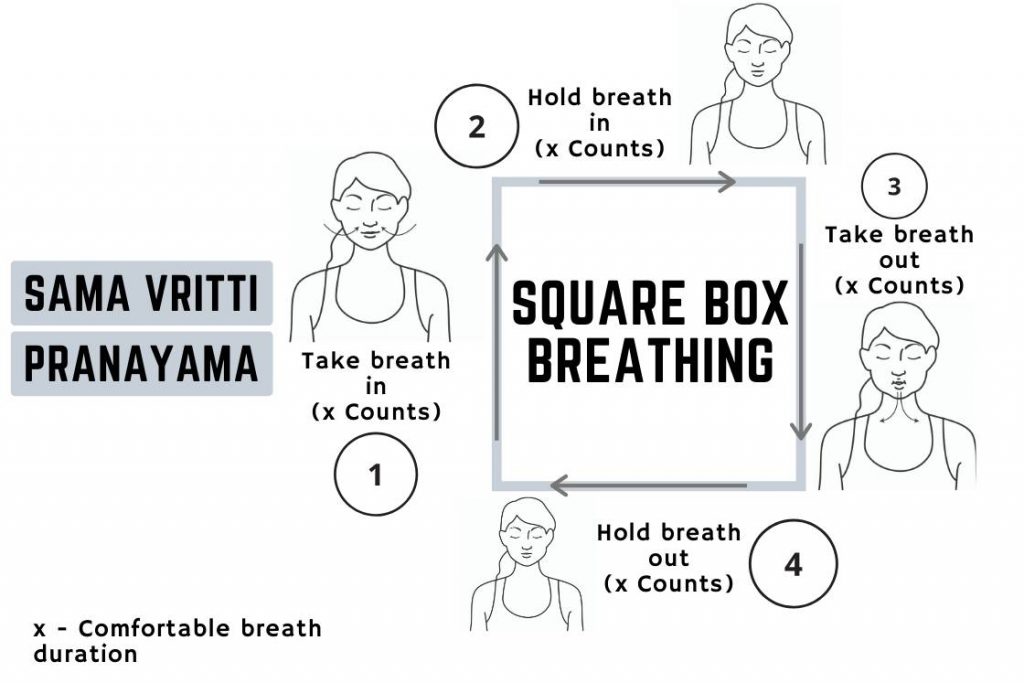
The word Sama means equal and Vritti means mental fluctuations.
You can encourage equal mental changes through breath by practicing sama vritti. In this method, you inhale, hold, and exhale your breath for the same amount of time.
As a result, equal breathing, square breathing, and box breathing are some other names for this pranayama.
The pranayama is generally practiced to relieve mental tension and anxiety by soothing and harmonizing the mind and body. It promotes healthy circulation of prana energy and boosts oxygen flow to the brain, both of which help to relax the mind.
It is an effective pranayama technique to control the state of mind before meditation
Steps to perform
- Sit in a comfortable upright meditative position.
- Bring your hands in a mudra, preferably Gyan mudra. Place then on your knees with palms up.
- Take a few stable breaths to become aware of your breathing.
- On the next inhale, breath in slowly to the count of 4 till your lungs are filled.
- Hold your breath for 4 counts.
- Slowly exhale the breath with a count of 4 so that your lungs are empty.
- Repeat the cycle for 2-5 rounds.
- You can gradually increase the count, making sure the inhale, hold, and exhale are of equal lengths.
Nadi Shodhana (Alternate Nostril Breathing)
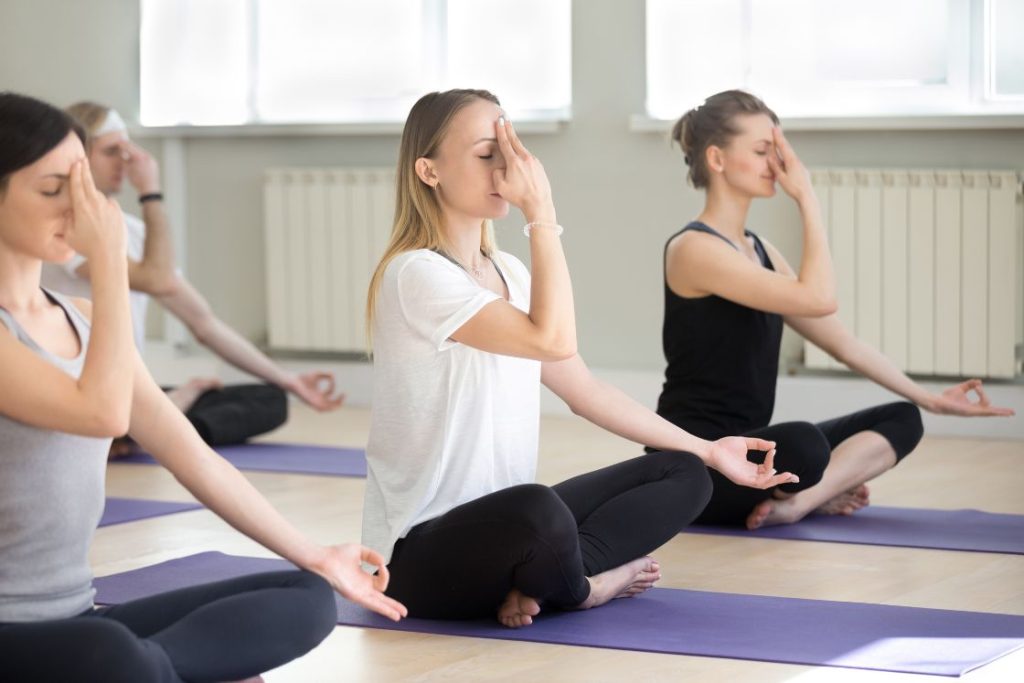
This pranayama, also known as alternate breathing, is extremely useful for purifying the two nadis – ida and pingala. It also stimulates the central energy channel, the sushumna nadi, which helps keep the mind aware and calm, which in turn helps with meditation practice.
Practicing Nadi Shodhana can relieve anger, frustration, stress and anxiety. It calms your nervous system and gives you a restful sleep. All of this is one way to increase concentration.
Steps to perform
- Sit in a meditative position of your choice with your back straight.
- Your left hand can be placed on your thigh in Gyan mudra.
- Bring your right hand towards your face. Place the thumb on the right nostril, the index finger will touch the middle of your eyebrows. The ring and little finger will be placed next to the left nostril. Fold your middle finger.
- The thumb, ring, and little finger will act as lids to open and close the nostrils.
- After stabilizing your breath, close your left nostril with your ring finger and breathe in from the right nostril.
- Once you have finished inhaling, close the right nostril with the thumb and retain the breath for a few seconds.
- Open the left nostril and breathe out completely.
- Now breathe in from the left nostril, while keeping the right nostril closed. Close the left nostril to hold the breath for a few seconds and release the right nostril to breathe out.
- This completes one round of nadi shodhana. The breathing ratio between inhaling, retention, and exhaling is 1:4:2.
- Practice at least 10 rounds before your sit for meditation.
Ujjayi Pranayama (Victorious, Oceans or Warriors Breath)
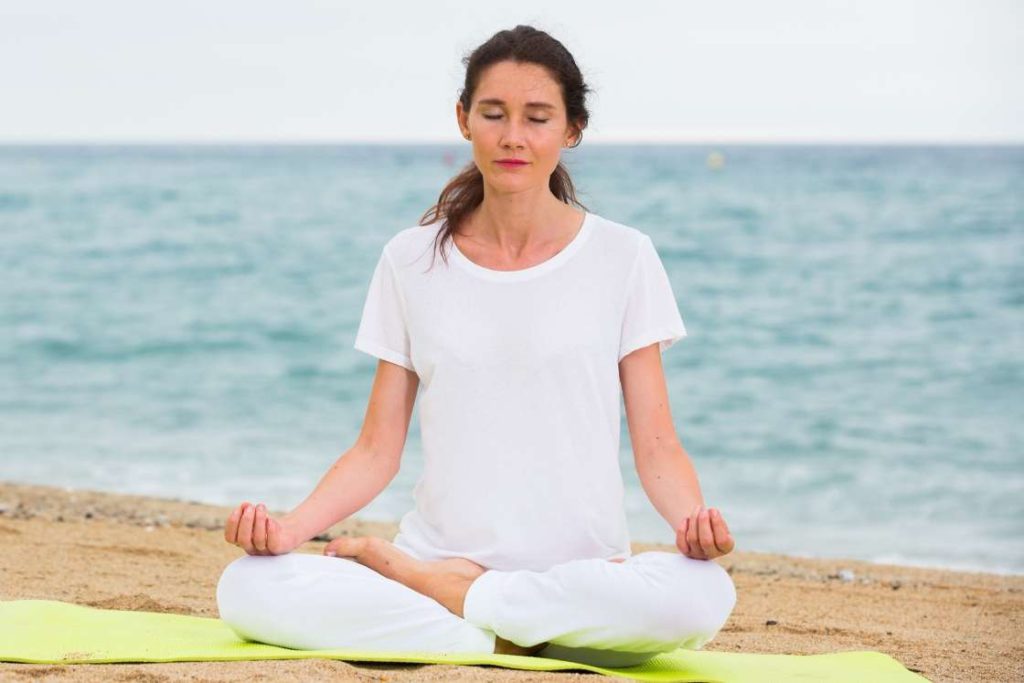
Ujjayi pranayama is a challenging pranayama because it requires you to intentionally constrict your throat. Although it may seem that you are unable to breathe properly, with enough practice you will be able to perform it with ease.
By slowing your mind and focusing on your breath, this pranayama can help you relax and de-stress. It keeps the body temperature in check by warming the core. It helps improve focus and concentration.
Some other well-known benefits of ujjayi pranayama are:
- Balances the nervous and cardiorespiratory systems.
- Stress and anger are released and replaced by calmness and tranquillity.
- Detoxifies Internal organs which improves immunity.
- Provides clarity of mind
- Boosts sleep quality
Steps to perform
- In a quiet and ventilated place, sit on the ground in a meditative position of your choice.
- Keep your back straight, your head aligned with the spine, and close your eyes.
- Take a deep inhalation so that your chest and belly visibly expand.
- Inhale through the nose and constrict your throat so that you can feel the air while breathing in.
- Your inhaling should make a rushing noise, just as if you were snoring. This sound is what gives the pranayama its name.
- While exhaling, keep your throat constricted. Empty your belly and chest on exhale.
- Once you can set a rhythm, inhale with your nose and exhale with the mouth open. The throat remains constricted at all times.
- Repeat the process for 5-10 rounds and finish by taking deep breaths for 1-2 minutes.
Bhramari Pranayama (Humming Bee Breath)
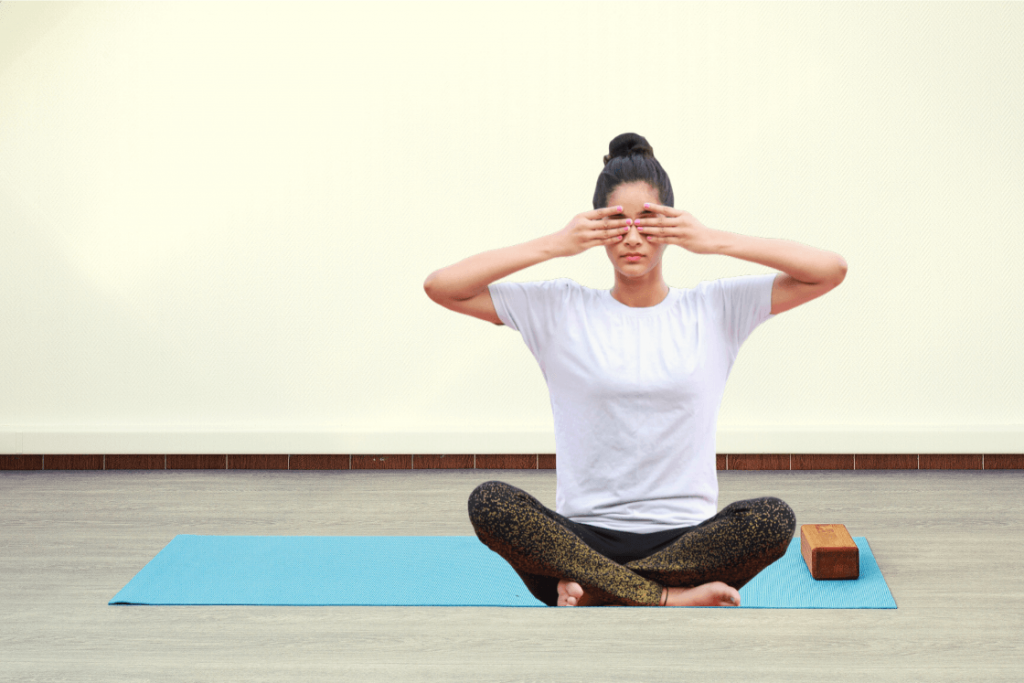
What makes this pranayama special is the sound it makes when you exhale, which is similar to the buzzing of a bee. It can be practiced even by beginners, as it protects against distraction and helps calm the mind and nervous system. It can be performed before meditation as it can increase the ability to concentrate. It helps to get rid of anxiety, agitation and worries, which in turn can improve concentration and memory.
If you suffer from migraines, you can practice Bhramari Pranayama to relieve the symptoms.
Steps to perform
- In a quiet and ventilated place, sit on the ground in a meditative position of your choice.
- Keep your back straight, your head aligned with the spine, and close your eyes.
- Place the thumb on the cartilage and the index fingers just above the eyebrows. The middle, ring, and little fingers will be placed across the eyes so that the tip of the fingers touches the bridge of the nose.
- Take a deep inhale through the nose, filling up your chest and belly.
- Slightly tuck in your chin and exhale while making a ‘hmmmmm’ sound at the back of your throat. Close your ears by pushing the cartilage through the thumb during exhalation.
- Repeat the process 5-7 times.
- After finishing the pranayama, take the time for your breath to return to normal while observing the effects.
Whenever your feel ready, you can start with your meditation practice.
How to breathe during meditation
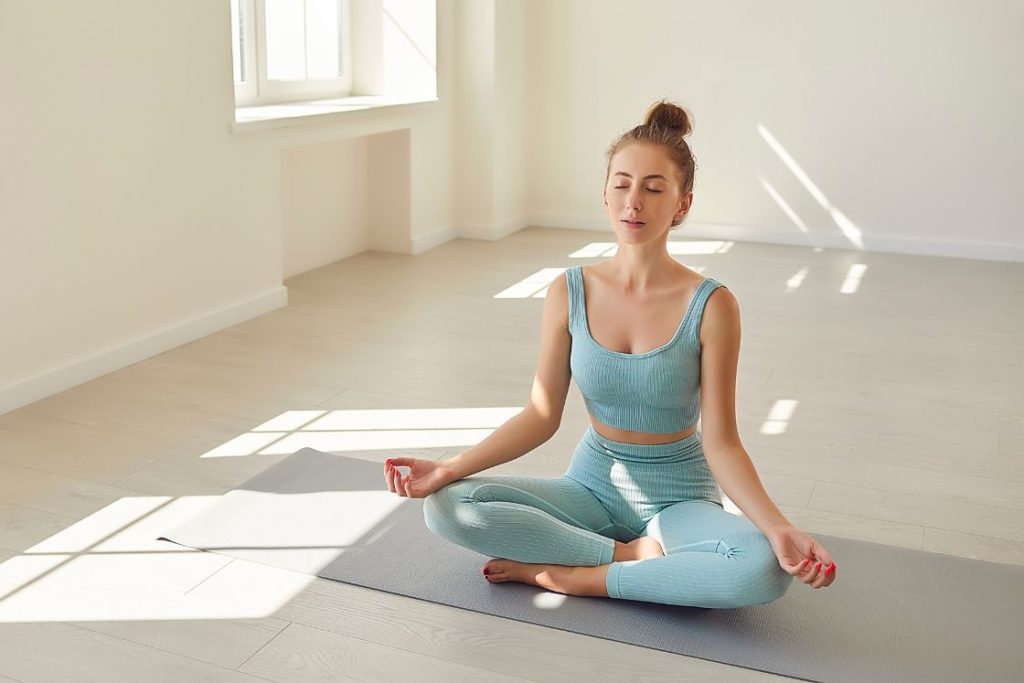
Meditation is a way to quiet the mind and release daily stress. It gives you a moment to step back from constant activity and settle into a space of calm. This is why many meditation teachers ask you to pay close attention to your breath. The breath helps soothe the nervous system, supports the parasympathetic response, slows the heart rate, reduces blood pressure, and improves the flow of oxygen and energy in the body.
It is often said that when you guide the breath, you also guide the mind.
So do you need a specific way of breathing during meditation? The most common method is mindful breathing.
After you take your meditative posture, gently bring your focus to the natural movement of your breath. Feel the breath as it enters and leaves through your nose. Notice the shift from inhalation to exhalation and observe how your chest and abdomen rise and fall with each cycle of breathing.
Stay with the breath without changing it. Let each breath bring a little more ease and softness. Simply watch the flow of breathing and allow the body, mind, and breath to settle into their natural rhythm. Remain aware and present with whatever you feel in the moment.
Conclusion
Practising pranayama before meditation helps you enter a calm and steady state of mind. You no longer need to force focus or struggle to stay aware. By guiding your breath with attention, you create a natural harmony between body, mind, and inner energy. This balance prepares you to settle more deeply into meditation and experience a quiet, centred space within yourself.

